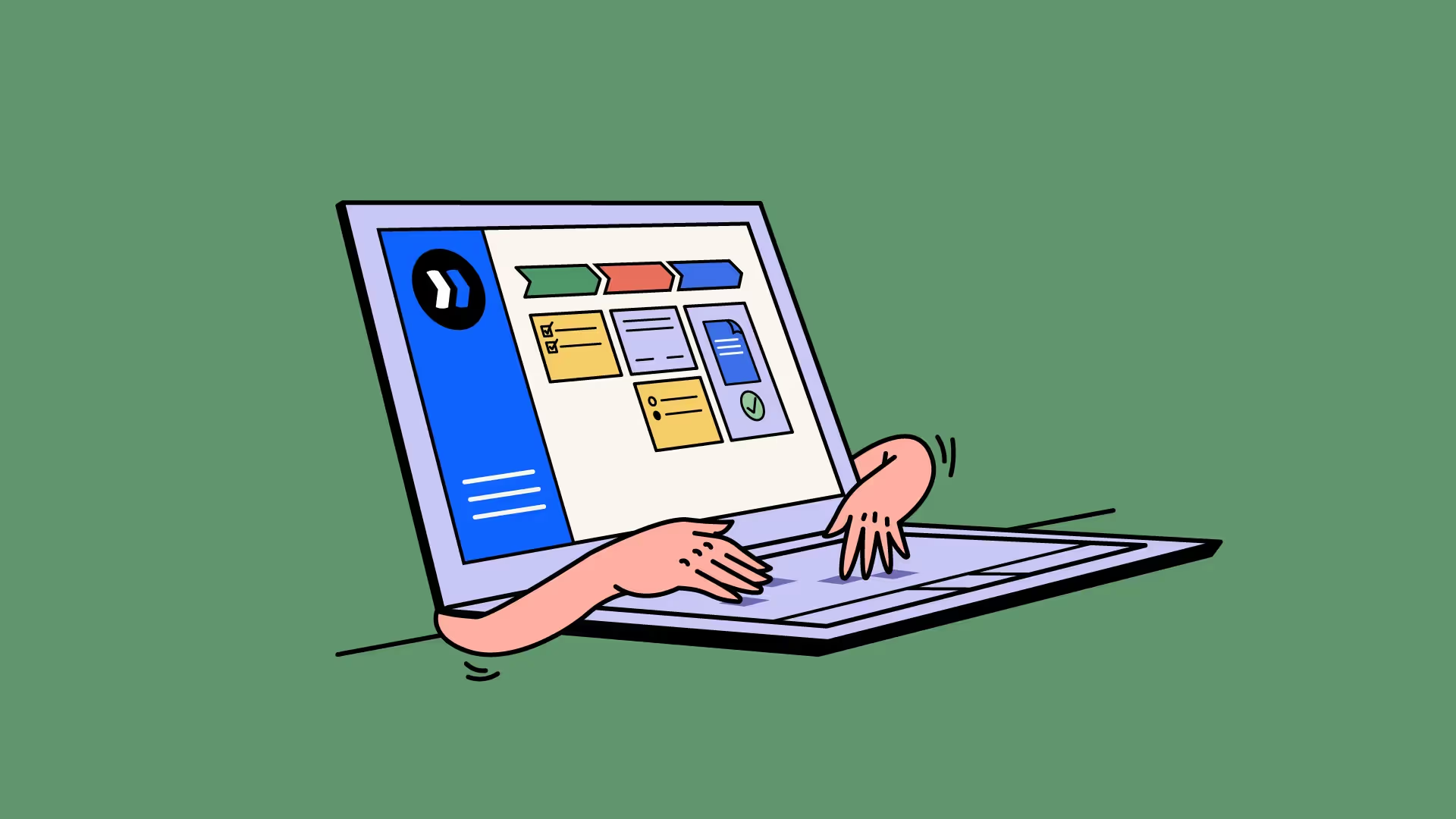Take a look at our G2 reviews and case studies, and you will find much praise for our customer onboarding team.
Having worked in the customer onboarding space for a considerable time before building a tool for onboarding, we’d like to believe we do know a thing or two! So we thought we'd put down our pre-sales and onboarding activities for those interested in upping their customer delight factor.
Before proceeding with the rest of the post, a couple of caveats:
- Our processes are very specific to Rocketlane: our product, customer base, and team culture. Applying these ideas as-is may provide varying results for you.
- This is what fits our needs and how we work now. The processes may evolve based on where we are as a team and as a company.
It starts at the pre-sales phase
The customer onboarding team at Rocketlane works in tandem with the pre-sales team to formulate the onboarding plan for every customer.
We use all relevant information about the customer during the pre-sales phase. For instance, as part of the sales process, our sales and solutioning teams collect extensive information from prospective customers on their top problems. They also capture the aspects of our demos and presentations that match the prospective customer’s business needs and requirements. These inputs are then passed on to the onboarding team.
Handoff
Goal: Gather all the information on the customer who is being handed off from Sales to Onboarding; understand their use cases and desired outcomes
The sales team documents every detail about the customer in a handoff document: how their current onboarding and implementation process is set up, their current tech stack, pain points, goals, etc. We use Rocketlane’s native documents for this purpose. The native document lets you add checklists, tasks, tables, and conversations right inside the doc. We hardly switch tabs!
Customer onboarding teams that we talk to say that they spend close to 8-10% of their time manually creating projects on their tools and collecting information from the sales team.
At Rocketlane we save the time by integrating Rocketlane and our CRM, ensuring that information flow from the CRM to Rocketlane is automated and seamless. Projects get created automatically, and information from the CRM is synced to fill the project fields in Rocketlane. This reduces our manual work significantly and also eliminates human errors.
Post-handoff, we create the onboarding plan based on our understanding of their current processes and tools.
If you want to learn how you can automate your project plan creation talk to our team today!
Customer onboarding
Kickoff
Goal: Reiterate understanding received during handoff; align with customers on desired outcomes; energize the stakeholders and participants at the customer’s end regarding the impact and goals of the engagement
Every good customer onboarding experience starts with a kickoff meeting. At Rocketlane, we don’t treat kickoff meetings as just another item to cross off our list. We use this time to align with customers on the information we receive during the handoff from Sales. We also have conversations with our customers on the desired outcomes, align on those outcomes, and prioritize them. Lastly, we get the executive sponsor to chime in on the strategic importance of the project: we get them to talk about why they are excited about the partnership, etc.
Our onboarding manager provides inputs on why we're seeing customers excited about the change, and whose support we would need at specific points to make the initiative a success—this helps us ensure all attendees leave energized and knowing their role well.
Next, we set up communication plans and channels. More importantly, we ensure we identify the executive sponsor and the person driving the onboarding at the customer’s end; this ensures we have someone to help unblock us should the onboarding progress get delayed at their end.
We walk the customer through the onboarding journey and the duration of each phase using Rocketlane’s project presentation feature. Next, we invite our customers to the respective Rocketlane project and assign dependencies to them in the form of tasks.
We use the Private Spaces feature for internal discussions and documentation and Shared Spaces to collaborate with customers on tasks, activities, documents, etc.
Post-kickoff, we help them get set up in Rocketlane. Based on their processes and how they use their current tech stack for onboarding, we create an onboarding plan for them.
There are usually two parts to this: basic and advanced setup.
Basic setup
Goal: Help customers experience using Rocketlane firsthand; demonstrate quick outcomes
If our customers have already templatized their plans and processes to a certain extent using tools such as spreadsheets, we help recreate them on Rocketlane. If this is their first time using any form of templates, we help them set up basic templates in their Rocketlane accounts. These templates are akin to lego blocks: they can use them to create desired structures for customer onboarding. These templates are also reusable, which means our customers don’t have to create a project plan from scratch for every customer. We also guide them through creating their initial projects using these templates and adding the stakeholders who will be a part of those projects.
Essentially, we help them experience the product firsthand.
Advanced setup
Goal: Demonstrate the value Rocketlane brings to the table
Once they have gotten familiar with the basics, we move on to the more complex parts of the product setup: We help them make detailed configurations, such as setting up their domain and personalizing their customer portal for a seamless customer experience, integrating with their business tools for automation and error-free data, etc., based on their needs.
At this stage, we get our customers to start onboarding their customers using Rocketlane. We get them to invite their customers to collaborate using Rocketlane and collect their feedback. Based on this feedback, we iterate the onboarding process set up in Rocketlane. Any requirements raised by our customer at this point are added as tasks in Rocketlane.
Customer education and engagement
Goal: Help drive improvement in the onboarding metrics that the customer cares about, using Rocketlane
While Rocketlane is intuitive and easy to use, we train admin users and users at the customer’s end as part of the onboarding. We train the admin users to set up templates, projects, configurations, etc. We conduct focused workshops for daily users to get comfortable using Rocketlane at a quicker pace. During these workshops, we work on enhancing their templates, ensuring their workflows are set up right, etc. These sessions help our team stay involved in the process and ensure we give our customers the right amount of push to get things done on time. On Rocketlane, we assign workshop tasks to the customer and our team to ensure joint accountability.
When the customer starts creating more projects on Rocketlane, we work with the customer’s leadership team, coaching them on setting up reports, dashboards, and product views that they can use to track overall project statuses as well as the progress on individual projects, and running meetings and standups using reports and insights from Rocketlane.
We use the status update feature to share weekly progress updates with all the stakeholders involved in the onboarding journey. All our discussions with customers are done within Rocketlane using the Conversations feature throughout the onboarding phase. This ensures that we aren’t hopping between emails, chat, docs, and Rocketlane to arrive at the correct conclusions.
Post-onboarding
Goal: Understand how the customer is using Rocketlane; recommend best practices, any required process improvements
A week after they are onboarded, we request our customers to give us a ‘reverse demo’: show us how they use Rocketlane. This helps us understand how they prefer to use our product. We use the reverse demo as input for the recommendations we make to them on improving their processes. We provide best practices tailored for every customer that they can apply to elevate their onboarding. This ‘best practices’ session is conducted two weeks after the training when they’ve had a chance to get familiar with the product.
Two weeks post-onboarding, we work with team leads at the customer’s end to understand their onboarding challenges and see how Rocketlane can help them with those issues. We also have conversations to understand if they need new processes or level-up existing ones.
Don’t want to wait till you get started with us to know how you can make your customer onboarding process better? Take our Maturity Model test now!
The 'Onboarding Day'
Goal: Get organizations to appreciate the role onboarding plays in customer retention; to energize onboarding teams in delivering delightful customer experience
Around a month after the onboarding process, we hold an ‘Onboarding Day’ for the customer. It is a day-long event to recognize the effort that had gone into the onboarding process and to help them look forward to leveling up their customer onboarding experience.
We ask them to invite their key stakeholders, and their Onboarding/Customer Success team is asked to present the different customer onboarding methods they will implement using Rocketlane.
The objective of this Day is to highlight the importance of customer onboarding and the value of this function. Beyond encouraging the adoption of our tool, we want to help build momentum around the onboarding process changes that we want to initiate at the customer's end.
We also want to help end-users on the customer's team approach this with the right mindset: we want them to look at Rocketlane not as just another tool but as a means to think about their customer onboarding processes and challenges: how can they level up? How can they go into every customer onboarding project with the right energy and motivation? In short, we want to help the customer’s onboarding team cultivate the right attitude, to want to get better at customer onboarding. All of this creates momentum for change management within the organization.
What we measure
Here are a few things we are measuring using Rocketlane, that help us iterate our onboarding process and make it better:
- We collect CSAT at regular intervals using Rocketlane’s in-built CSAT tool, to measure the pulse of the customer. It helps us iterate on their journey real-time, rather than do it in retrospect
- The number of onboarding projects that are completed on time and those that have extended beyond the planned dates
- We use project performance reports and task completion views to understand who in the team can complete a project efficiently. We also use the Operations Insights report to understand how projects across templates are performing: delays, bottlenecks, where we’re completing projects well before time, etc.
Looking at the bigger picture
We believe that onboarding is the most important phase in the customer journey. Onboarding is to a customer journey what hors d'oeuvres are to a full course meal: customers tend to use their onboarding experience to validate their purchase decision. It is, after all, their first post-sale partnership with your team. It’s also when both you and your customer will be investing the most time and effort.
Rocketlane helps you elevate your onboarding experience by turning your customers into collaborators and partners in the onboarding journey. Sign up today for a free trial.

























.webp)